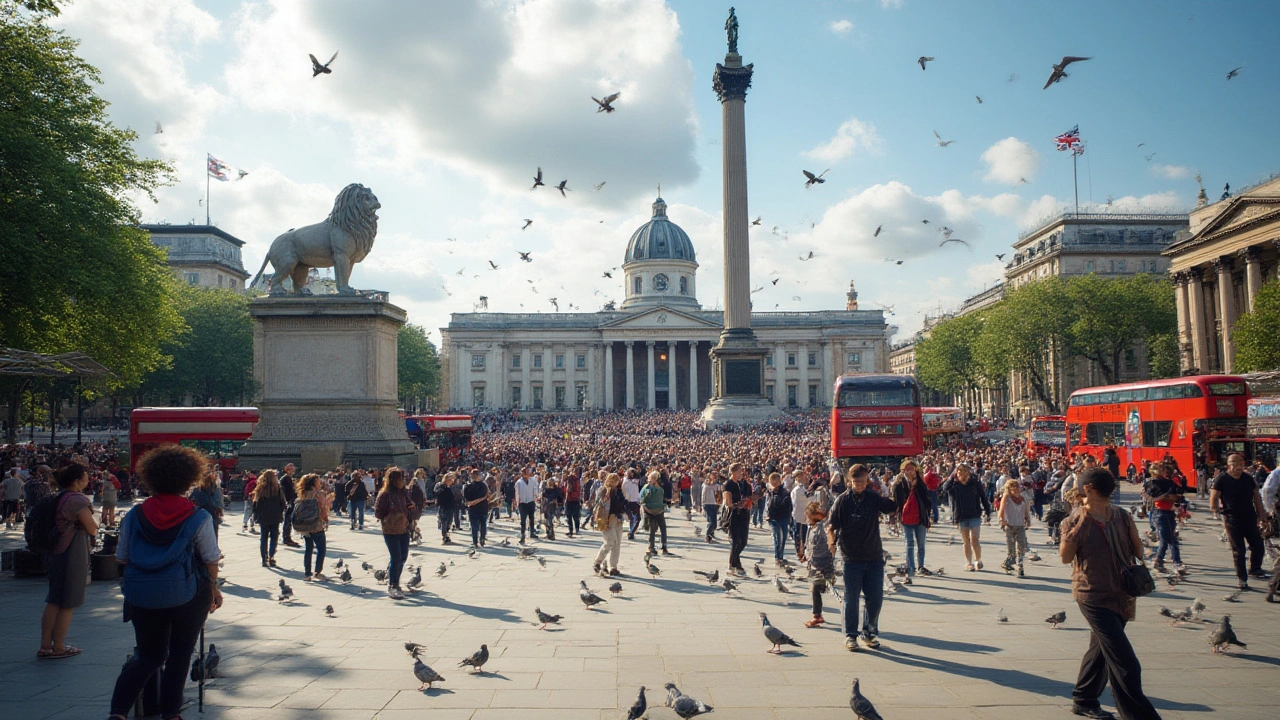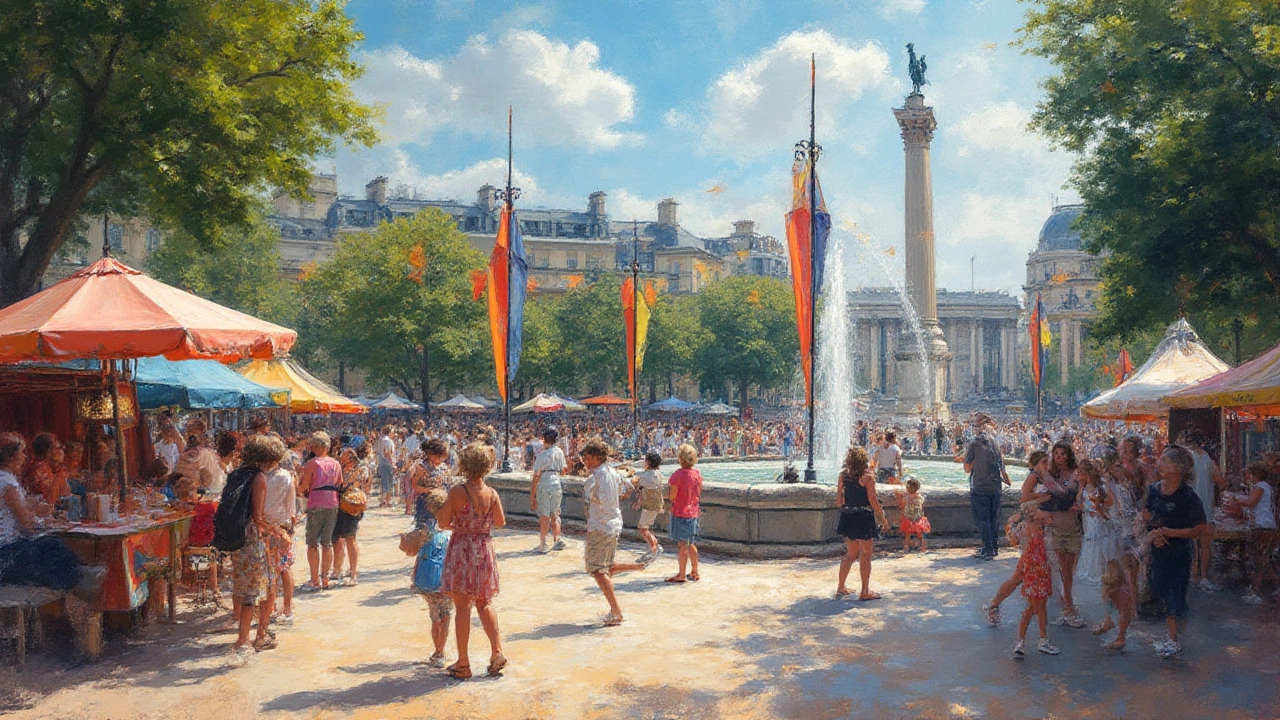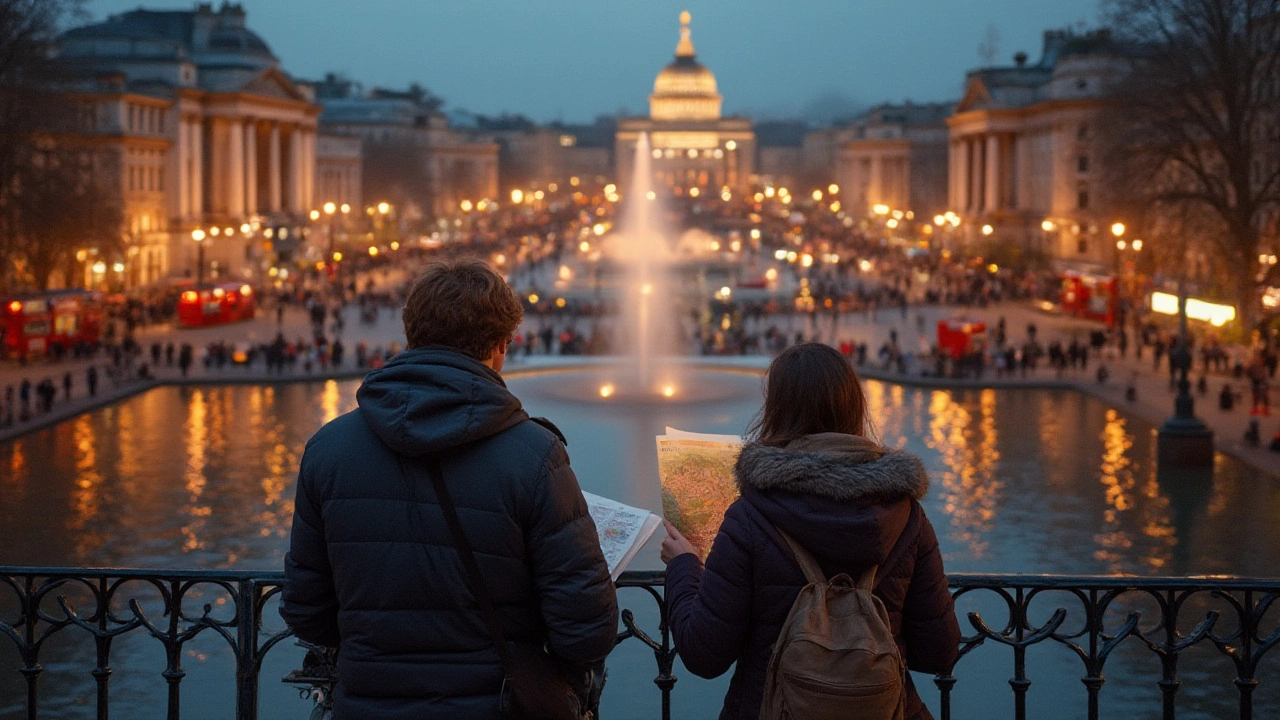Trafalgar Square in London: Art, Culture, and History for Curious Explorers

London isn’t shy about its icons, but few carry as much cultural weight as Trafalgar Square. Step into this open space right in the heart of the city, and you’re instantly struck by energy—tourists with cameras, locals diving into Pret on lunch breaks, families arguing over which pigeon is their favourite. Trafalgar Square has the rare ability to make you feel like you’re part of something bigger, weaving all those London stories together in one bustling location. If you’re living in London or just exploring for a weekend, this square’s pulse gets into your bloodstream. Honestly, few places offer you such an easy shortcut to art, culture, and history at your feet (quite literally, when you see the cobbled ground glisten after a summer shower).
How Trafalgar Square Became London’s Cultural Living Room
History isn’t something you need to search for in Trafalgar Square; it calls out to you the moment you spot the looming figure of Admiral Nelson standing tall atop his column. Designed to commemorate the Battle of Trafalgar in 1805 (Napoleon wasn’t having such a good day that year), the square has stood here since 1844, making it one of London’s oldest public spaces. Your first walk through the place feels a bit like entering a chapter from a history book that decided to leap off the page. Every monument and statue tells a story—King George IV waving his bronze arm, or Charles James Napier being entirely ignored by teenagers taking selfies beside him. And let’s be real, no one’s ever quite sure why the fourth plinth is occasionally home to a giant blue rooster or a huge thumbs-up, yet everyone pauses to snap a photo anyway.
Location-wise, Trafalgar Square couldn’t get more central: you’re hemmed in by The Strand, Whitehall, Charing Cross, and nearby Covent Garden, making it a crossroads for so much of what makes London tick. Next time you rush past during a protest, pride parade, or the annual Christmas tree lighting (did you know Oslo has sent London a spruce every year since 1947?), look up. You're surrounded by layers of living history blending seamlessly with spontaneous city moments—the kind you only get in this city. Even the fountains you pass by, installed in 1845, were originally intended to prevent riotous crowds from gathering (Londoners, as always, find ways to crowd the space anyway).
With all this history, it’s no wonder Trafalgar Square has always been a stage for democracy. From anti-war demonstrations to climate change rallies and celebrations after England’s World Cup wins, this square is the city’s unofficial town hall—shouting, singing, and sometimes weeping together. During lockdowns, the empty square looked almost ghostly on the evening news, a powerful reminder that London’s soul is in these communal moments.

Art for All: Trafalgar Square’s Museums, Landmarks, and Pop Culture
If you’ve got even a tiny crush on art, Trafalgar Square is the place to give in. The National Gallery dominates the north side of the square—it’s impossible to miss those columns or the entrance steps patchworked with people eating Tesco meal deals. The National Gallery holds over 2,300 masterpieces, with Van Gogh’s ‘Sunflowers’ and Constable’s ‘The Hay Wain’ just waiting for your jaw to drop (and it’s all free entry, which, with London’s prices, feels like magic).
Art here isn’t trapped indoors, though. The Fourth Plinth is the city’s cheekiest open canvas—hosting everything from Marc Quinn’s statue of Alison Lapper, pregnant, (proudly challenging every notion of public sculpture) to Yinka Shonibare’s massive ship in a bottle. Every new artwork sparks debates among Londoners: “What on earth is that?” “Do we like it?” Which, honestly, feels like the heart of London’s art culture. If you’re spending a lazy Sunday nearby, check if there’s a new installation. The anticipation alone brings Trafalgar Square to life.
Then there’s St Martin-in-the-Fields at the northeast corner—part working church, part underground café, part world-class concert venue. The lunch hour sees a mix of city workers, nuns, and out-of-towners grabbing soup in the crypt café. It’s not just for the devout or the culture vulture; I’ve ducked in with my daughter Lysandra more times than I can count, hiding from rain and catching surprise brass band rehearsals echoing up the stone steps. You haven’t properly experienced city life until you’ve eaten cake in an old crypt while listening to jazz.
Trafalgar Square has also crept into pop culture. The silver lions at Nelson’s Column are instantly recognisable, but did you know these iron beasts are smooth where you’d expect them to be anatomically correct? Victorian modesty won out, apparently. You may have also walked through film sets here without knowing—scenes from ‘Doctor Who,’ ‘The Avengers,’ or even ‘St Trinian’s’ have used this open-air stage. Even the New Year’s celebrations, beamed live across the UK, radiate out from this spot. During Pride in London, the square becomes a sea of colour, and Diwali brings dazzling light and dance each autumn. It’s never just a tourist zone, even on the busiest days.

Tips for Exploring Trafalgar Square Like a Local
Ready to escape the crowds (or just make your next visit less of a headache)? Here’s how to soak up everything without playing tourist bingo.
- Trafalgar Square is best visited early in the morning if you crave quiet. By 8 am, you’ll mostly share the space with street sweepers, ambitious joggers, or an early-bird photographer capturing the city before the caffeine kicks in.
- The National Portrait Gallery just reopened after a massive refit. Go late on a Friday—there’s music, pop-up bars, and fewer crowds. No one checks if you linger for ages by the Tudor rooms.
- If you’re feeling peckish, don’t default to chains. Instead, head through St Martin’s to its legendary crypt café for proper cake or check out hidden gems like the café at Waterstones Piccadilly nearby—the biggest bookshop in Europe and a favoured writing spot for many locals.
- With kids or teens, channel their energy towards spotting Easter eggs around the square. How many pigeons? Can they find the plaque for Edith Cavell, or spot Big Ben through the lamp-posts near Whitehall? It’s a game and a secret history lesson rolled into one.
- If you get tired, CityMapper or the TfL website tells you when the next Hopper fare bus leaves Charing Cross. Buses here go almost anywhere central, and it beats cramming onto the Northern line at rush hour.
- Check event listings for the Mayor of London’s parades, Car Free Day, or mass yoga sessions in the summer. You never quite know if you’re about to join a movie night or a silent disco until you stumble upon it.
- If you come in winter, bring a flask and huddle near the square’s Christmas tree—worth seeing after sunset, when lights make even the greyest London evening look cinematic.
Locals sometimes joke that Trafalgar Square is both London’s front yard and its living room—a meeting ground, a stage, and a shortcut when the Tube fails you. Yet with all its quirks (watch your lunch; those pigeons are downright criminal), it’s got the magical ability to make everyone—newcomers, residents, artists, and business folk—feel like they belong for a few minutes. And that’s no small thing in a city that changes every second.
So whether you’re hunting for the loudest street performer, peeking at masterpieces, plotting a protest, or just trying to find Wi-Fi on your lunch break, Trafalgar Square wraps you into London’s story—and maybe, if you let it, you’ll find your own moment worth remembering in the swirl of city life.